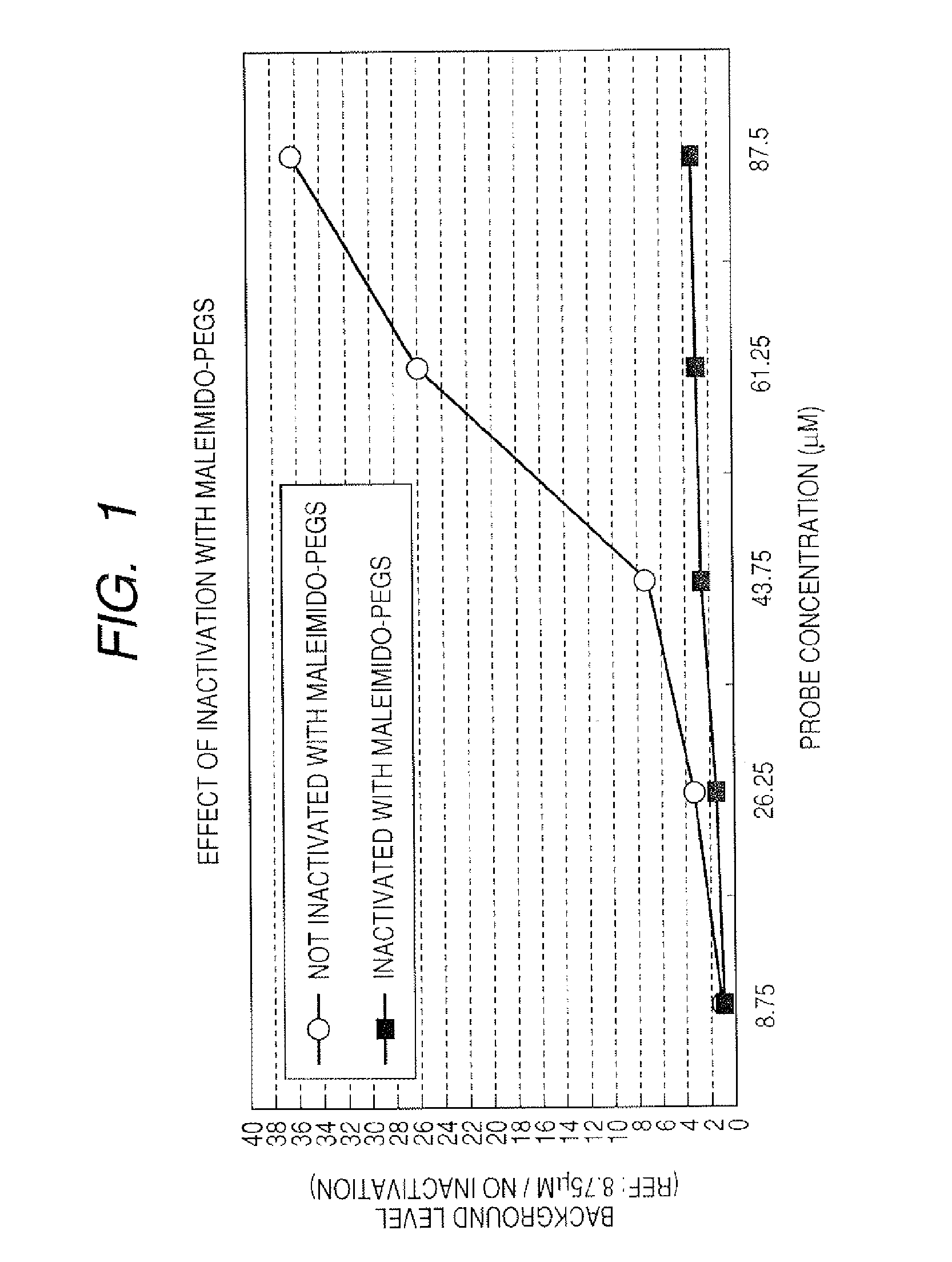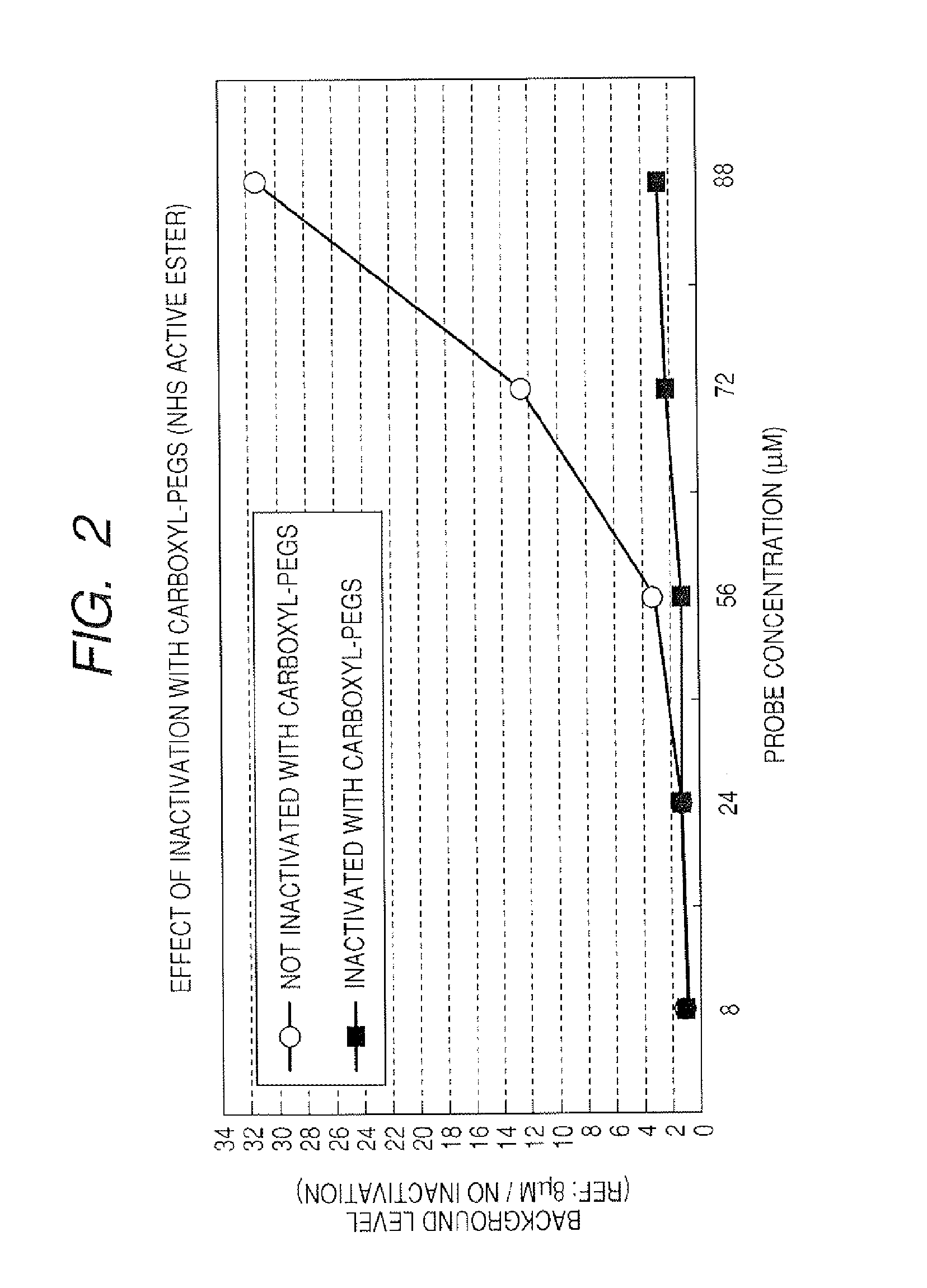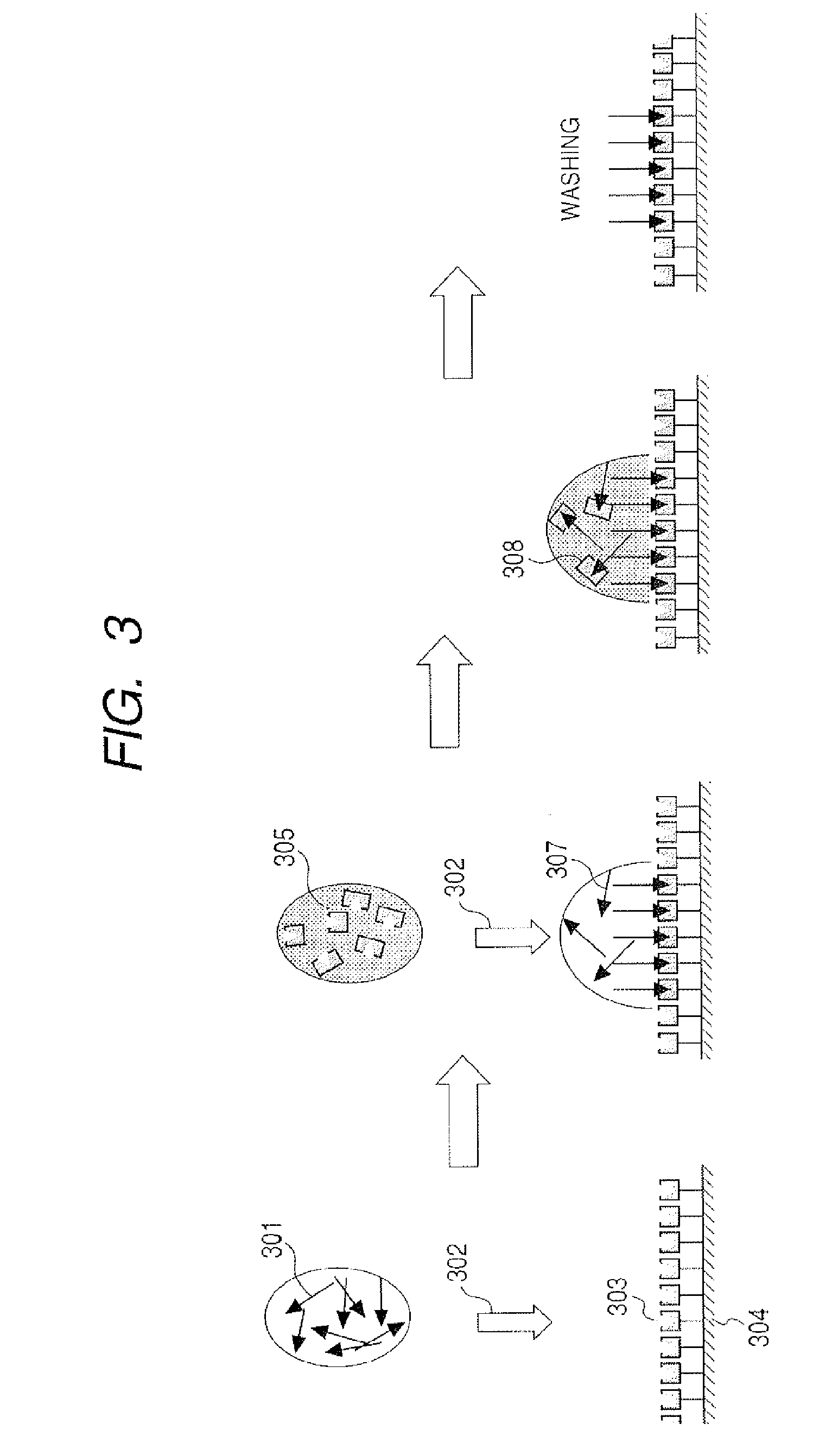Method of manufacturing probe-immobilized carrier
a technology of immobilized carrier and probe, which is applied in the field of manufacturing a probeimmobilized carrier, can solve the problems of reducing the detection accuracy of the probe-immobilized carrier in many cases
- Summary
- Abstract
- Description
- Claims
- Application Information
AI Technical Summary
Benefits of technology
Problems solved by technology
Method used
Image
Examples
example 1
[0071]An inactivating treatment in the case of using thiol-labeled DNA probe will be described in detail in the order of the steps as follows.
[0072](i) Synthesis of Probe and Binding of Target Substance to Fluorescent Label
[0073]A single-stranded DNA probe was used as a probe capable of specifically binding to a target substance. A DNA automatic synthesizer was used to synthesize a probe 1 having SEQ ID NO: 1 as described below. In addition, a mercapto (SH) group was introduced into the terminal of the single-stranded DNA of SEQ ID NO: 1 using Thiol-Modifier (manufactured by Glen Research Corp.) when synthesizing with the automated DNA synthesizer. Subsequently, the probe was collected after a normal deprotection and then purified by high-performance liquid chromatography.
Sequence of Probe 1(SEQ ID NO: 1)5′HS-(CH2)6-O-PO2-O-ACTGGCCGTCGTTTTACA3′
[0074]Further, an unlabeled single-stranded DNA having a base sequence complementary to the sequence of the probe 1 as described above was sy...
example 2
[0095]In this example 2, an inactivating treatment using an amino-labeled DNA probes will be described in detail in the order of steps as follows:
[0096](i) Preparation of Probe and Binding of Target Substance to Fluorescent Label
[0097]A single-stranded DNA was used as a probe capable of specifically binding to a target substance. A DNA automatic synthesizer was used to synthesize a probe 2 having SEQ ID NO: 2 as described below. An amino (NH2) group was introduced into the end of the terminal of the single-stranded DNA probe using Amino-Modifier (manufactured by Glen Research Corp.) when synthesized with the DNA automatic synthesizer. Subsequently, the probe was collected after normal deprotection and then purified by high-speed liquid chromatography.
Sequence of probe 2:(SEQ ID NO: 2)5′NH2-(CH2)6-PO2-O-ACTGGCCGTCGTTTTACA3′
[0098]In addition, the single-stranded DNA probe having the sequence of the probe as described above was synthesized on a DNA automatic synthesizer. A fluorescent ...
PUM
| Property | Measurement | Unit |
|---|---|---|
| Area | aaaaa | aaaaa |
Abstract
Description
Claims
Application Information
 Login to View More
Login to View More - R&D
- Intellectual Property
- Life Sciences
- Materials
- Tech Scout
- Unparalleled Data Quality
- Higher Quality Content
- 60% Fewer Hallucinations
Browse by: Latest US Patents, China's latest patents, Technical Efficacy Thesaurus, Application Domain, Technology Topic, Popular Technical Reports.
© 2025 PatSnap. All rights reserved.Legal|Privacy policy|Modern Slavery Act Transparency Statement|Sitemap|About US| Contact US: help@patsnap.com



